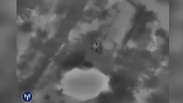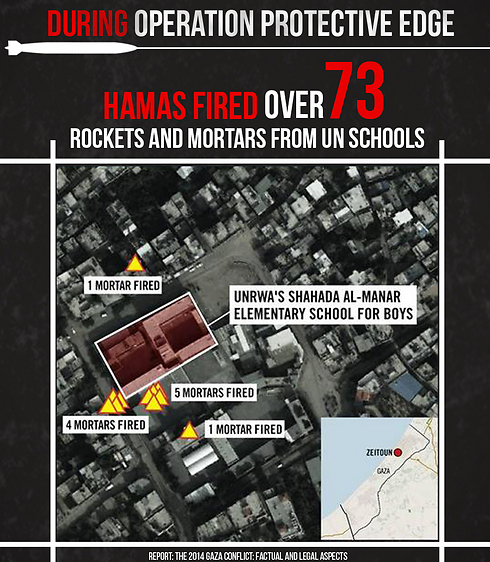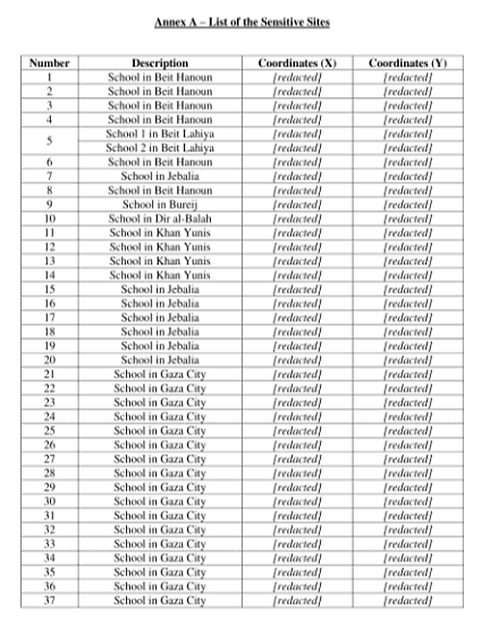
'If the lawyers said no during Gaza war, the IDF didn't attack'
IDF judicial department played a key role in determining targets during last summer's conflict, including having power to veto a mission if civilian lives were at stake.
Accurate intelligence, close consultations with lawyers and strict criteria for attacks: A representative of the Military Advocate General explained in a briefing Sunday exactly how the IDF operated during Operation Protective Edge - Israel's 50-day conflict with Hamas in Gaza last summer - and the dilemma posed regarding each target, when one major objective was to prevent harm to civilians.
"If a lawyer says it is not a legal target, the commander cannot execute the attack and cannot challenge this," the official explained.
- Israel's Protective Edge report: 44% of Palestinian casualties were terrorists
- Netanyahu: UN report on Gaza war a waste of time
- Ben-Dror Yemini / Giving Israel's haters a free gift
Sunday's briefing was held to coincide with the release of an Israeli report by the Foreign Ministry, which preempts a report by a United Nations commission of inquiry into the conflict.
The briefing included the release of a "top secret" document that for the first time reveals the IDF's process identifying a target during the operation.
The target in question was the home of Ibrahim al-Shawaf, a senior member of the Islamic Jihad military wing in Khan Younis, which also served as a command and control center and as a weapons cache. The document describes the decision-making process before the attack on the building. This included IDF lawyers, who approved the attack, but not before they set a series of conditions.
The document includes the exact location of the house and even its coordinates. It also describes who was present at the target: the military commander, his family and other Islamic Jihad activists.
The description of the target: Part of a residential complex, 23 meters square in size. The target was a one-story building of 13 meters square.
Weapons at the target: Kalashnikov rifles, metal pipes, equipment for manufacturing rockets, including Grads.
Sensitive sites in the target area: no sensitive sites within a radius of 100 meters.
Method of achieving objective: Attack by fighter jets to destroy weapons cache while avoiding civilian casualties.
Conditions for carrying out the operation (as determined by the IDF legal experts): Observation and monitoring in real time, night-time attack, effective warning using the "knock on the roof" practice (firing an unarmed or low-impact projectile onto the roof of a building to warn the occupants that a real attack was coming).
Name of official giving authorization: Redacted.
Eventually the attack took place - and footage examined afterwards showed secondary explosions verifying the IDF's intelligence that the house was indeed a weapons cache.
'Grounded in international law'
Lt. Col. Eran Shamir-Borer, a senior official in the International Law Department of the Military Advocate General, presented the document at a briefing to reporters. He revealed that this is the first time the IDF has brought out one of the documents that shows its procedure for deciding targets during the operation.
"This procedure is based on international law. It is the aim of all parties involved in the process to obey the rules. There were thousands of such objectives in Protective Edge. We planned the targets before and during the operation, and all of them went into the bank of targets.
"On the one hand the intelligence provided us with information and convinced us why this target - that looks like a civilian building - is in fact a legitimate one. In this case, the house was weapons cache and the site of operational planning, making it a military target. They provided us with information on what was happening around the target, which allowed us to respect the principle of distinction (between civilians and militants), and thus abide by the principle of proportionality."
Shamir said that military lawyers were involved in the early planning stages of the attacks.
"The job of lawyers is to determine whether this is a military target, to keep to the issue of proportionality and even be involved in presenting different attack scenarios. In the IDF, if a lawyer gives an opinion, this is the decider. If the lawyer says it is not a legal target and that there is no purpose, no commander cannot carry out the attack and cannot appeal against it.
"In some cases, the lawyer says to the commander: 'You can attack but there are several conditions: You must give effective warning to the residents of the house, to call them, let them know about the attack, give them enough time to flee. In the case of the attack in Khan Younis, the lawyers approved the attack with such conditions, and made a recommendation to maintain real-time visual tracking. This allows you to monitor civilian casualties."
Shamir also made general comments on the war between the IDF and Hamas.
"This is a conflict with a non-state actor that creates asymmetry between a state that respects the laws of war, and a terrorist organization. The battlefield is a civilian area. We obtained a large amount of documents indicating that this was Hamas' strategy. It taught its fighters how to act within an urban population, where it is easy for them to jump from roof to roof and move about via the tunnels. This illustrates the way in which they conducted the war. In Saja'iyya, we discovered a document – a guide for fighting in a built-up area – that said the IDF troops should pulled dragged as much as possible into the dense population."
Shamir said that there were thousands of sites in Gaza that enjoyed full protection, partly thanks to an arrangement with the United Nations.
"We had a map with thousands of sensitive installations, painted orange, so all forces knew they were sensitive sites. This map is updated constantly. We established a practice in which the UN twice a day provided us with the coordinates of the most sensitive places, and we passed them on to the troops in the field, so they knew each site. This is the first time that we have disclosed this. Ten minutes after we received the information from the United Nations – it was passed to the troops in the field."
Shamir also gave the example of how lawyers approved the IDF attack on a school from where mortar shells were being fired.
"We refrained from attacking schools, but there were some exceptions. We identified a compound in Saja'iyya that included several schools, one belonging to the United Nations, a clinic and a mosque. During the operation, dozens of mortar shells were fired from there into Israel, day after day. On August 25, after 11 mortar shells were fired- we decided to attack. We issued orders to the troops on how to carry out the attack on the school, how to give warnings and take preemptory steps to ensure that there were no civilians inside. Eventually the mortars were attacked, and we had no knowledge of the wounded civilians."
"Hamas took advantage of this situation," said Shamir. "It published a document calling for the neighborhood's residents not to leave and not to heed the warnings from the IDF. Those who did evacuate were told to go back. In some cases, Hamas urged people to stay home and denying them leave."
'Hamas conceals identities of the dead'
One of the main issues after the operation was the number of casualties in the Gaza Strip, and how many of them were innocent civilians.
Shamir: "Hamas ordered the removal of any military symbols from the bodies of dead terrorists so they would not be counted as gunmen, and to obfuscate the casualty figures. Their guidelines were to prevent the publication of names of military commanders who had been killed. They were very successful in hiding people's identities.
"We established a team of intelligence officers that has already been working for nine months to try to collect material from various sources, in order to determine the identities (of those killed). The information we have collected, as of April 2015, is that at least 44 percent of those killed were armed men. Thirty-six percent were definitely civilians, and we have no indication of their involvement in the conflict. The remainder were men aged between 16 and 50… some of them were armed and some were not."
"I know the claim of a large number of civilians (killed) was intended to prove that Israel acted disproportionately," said Shamir, "but as lawyers, we know this has no legal merit. If you are serious about the principle of proportionality, you cannot look at the overall numbers, but must consider each attack separately, to understand the commander's actions in each case - whether it was exaggerated or not depending on the threat. This is how to test the principle of proportionality."
Entire neighborhoods of rocket launchers
Among the information in Israel's report is a table of all sensitive Gaza sites that were off limits for attack, such as hospitals, schools, places of worship and other UN installations. The report contains multiple aerial photographs of neighborhoods in Gaza from where massive rocket and mortar barrages were fired at Israel. Each launch site is marked with a red dot, and there are photos in which an entire neighborhood covered in red, as was the case with Saja'iyya. Other images show the damage to Israel's home front.
The report also includes numerous documents that IDF troops seized during the operation. One of the documents proves the systematic and deliberate exploitation of civilian homes and residential areas for military purposes, such as hiding the communication equipment near TV antennas. Another document, which is a guide for fighters entitled "Factors for successfully concealing weapons in buildings," details how to hide weapons in houses and how to use household items to smuggle weapons into residential areas.
On page 49 of the report there is a picture of the house and the tunnel through which the body of slain IDF Staff Sergeant Oron Shaul was transported. The report states that on July 20, Hamas militants removed Shaul's body through a tunnel in Saja'iyya. The tunnel exit was covered with a carpet in the living room of a civilian building.
Revealing this information now is vital, said new Foreign Ministry Director-General Dore Gold. "Many of us talk about the morality of the IDF, and you have it in the report from the generals, but here is the proof, with footnotes and real information."
Gold said that the timing of the publication of the report was also key.
"We finished the work and did not wait. The report of the UN commission of inquiry (into Protective Edge) is due at the end of the month, but we have an indication that it will come out sooner... So we decided to present our official position."














